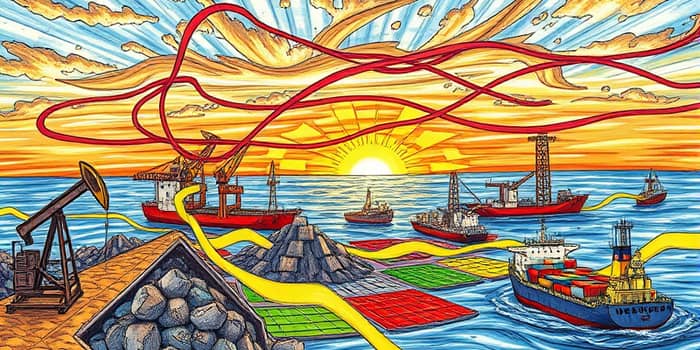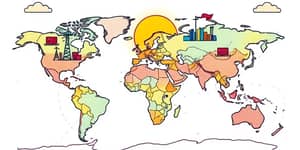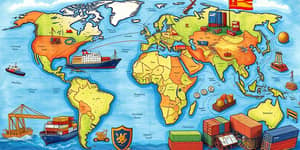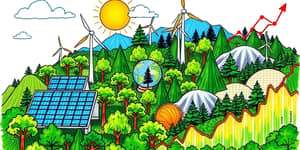2025 presents an unparalleled mix of volatility and opportunity in commodities. As investors weigh geopolitical shocks against evolving demand, understanding the core drivers of price movements becomes crucial. This guide offers a comprehensive exploration of macroeconomics, policy shifts, and sector-specific trends to help market participants navigate uncertain and dynamic market conditions.
Macroeconomic Forces at Play
Global economic growth remains subdued, with many economies grappling with the aftermath of sustained inflationary pressures. In the United States, sticky inflation around 3% is influencing central bank decisions, leading to higher interest rates that dampen consumption and investment. At the same time, a strong US dollar is exerting downward pressure on dollar-denominated commodities, making them more expensive for buyers using other currencies.
These conditions have a two-fold effect: they can depress demand for energy and base metals while simultaneously driving investors toward commodities as an inflation hedge. For traders and asset managers, balancing exposure between defensive precious metals and cyclical raw materials becomes a nuanced exercise in risk allocation.
Impact of Policy & Geopolitical Shifts
Geopolitical tensions and evolving trade policies are shaping new supply chains and price risk. The prospect of renewed US tariffs, the EU Deforestation Regulation, and sanctions on countries like Iran add layers of complexity to global flows. Meanwhile, the ongoing Russia-Ukraine conflict and US-China competition continue to inject volatility into energy and metal markets.
- US tariffs under a new administration may reshape import costs.
- EU regulations encourage sustainable sourcing and affect soft commodities.
- Sanctions fuel supply constraints and elevated risk premiums.
Proactive market participants are adopting regionalization of supply chains to mitigate these risks, diversifying their supplier base and re-evaluating long-term contracts to ensure resilience.
Sector Spotlight: Energy, Metals, Agriculture, Soft Commodities
In energy markets, OPEC supply decisions and Middle East tensions are key. Traders should consider weather-driven demand swings and the role of strategic reserves.
Nonferrous and battery metals remain at the forefront of the green transition. While energy transition driving metal demand supports long-term growth, short-term oversupply in nickel and lithium can create sharp price corrections.
Agricultural commodities face increasing weather volatility, from droughts in cocoa-growing regions to floods affecting rice paddies. Price spikes in coffee and tea illustrate how climate volatility affects food security and market stability.
Price Movements & Practical Guidance
April 2025 price movements highlight the divergent performance across commodities:
- Coffee: $405.35 USD/lb, up 5.0% month-on-month, 74.9% annual
- Cocoa: $9,240.40 USD/ton, up 1.0% monthly, down 19.7% annual
- Tea: INR 171.68/kg, up 12.4% monthly, 26.9% yearly
- Nickel: $15,820 (projected), under pressure from oversupply
To harness these trends, investors can deploy a mix of futures contracts, options, and structured products. Hedging strategies, such as using intercrop spreads in agriculture or calendar spreads in energy, offer practical ways to manage price risk. Incorporating risk management and hedging strategies into portfolios helps stabilize returns during periods of extreme volatility.
Outlook & Emerging Opportunities
Looking ahead, several themes are likely to shape the commodities landscape:
- Renewable energy materials, like copper and lithium, versus traditional hydrocarbon fuels
- Asset-light trading models and digital platforms reducing capital intensity
- Long-term strategic contracts focusing on sustainability and certification
Institutional investors are increasingly allocating to metals by investing in recycling facilities and secondary processing. This not only addresses supply constraints but also aligns with ESG mandates. Meanwhile, traders can explore niche markets, such as carbon credits in agriculture or rare earth elements for electronics.
Conclusion
As 2025 unfolds, the commodity markets will continue to oscillate under the twin influences of policy shifts and macroeconomic headwinds. The interplay of geopolitical tensions and tariff threats with monetary policies creates an environment ripe for both risk and reward. By understanding the underlying drivers, employing robust hedging techniques, and staying ahead of regulatory changes, investors and traders can position themselves to capitalize on the next wave of commodity cycles.
Embrace the challenges and opportunities of this dynamic market, and leverage data-driven insights to craft resilient, future-proof portfolios.
References
- https://www.euromonitor.com/article/commodity-market-outlook-q1-2025-heightened-uncertainty-amid-looming-policy-shifts-and-potential-tariffs
- https://tradingeconomics.com/forecast/commodity
- https://www.morganstanley.com/im/en-gb/intermediary-investor/insights/articles/commodity-outlook-2025-three-areas-to-watch.html
- https://www.spglobal.com/commodity-insights/en/news-research/topics/commodities-2025
- https://internationalbanker.com/brokerage/commodities-are-likely-to-remain-under-pressure-in-2025/
- https://tradingeconomics.com/commodities
- https://www.mckinsey.com/industries/energy-and-materials/our-insights/how-to-capture-the-next-s-curve-in-commodity-trading
- https://www.gtreview.com/magazine/the-commodities-issue-2025/what-2025-may-bring-to-commodity-markets/










